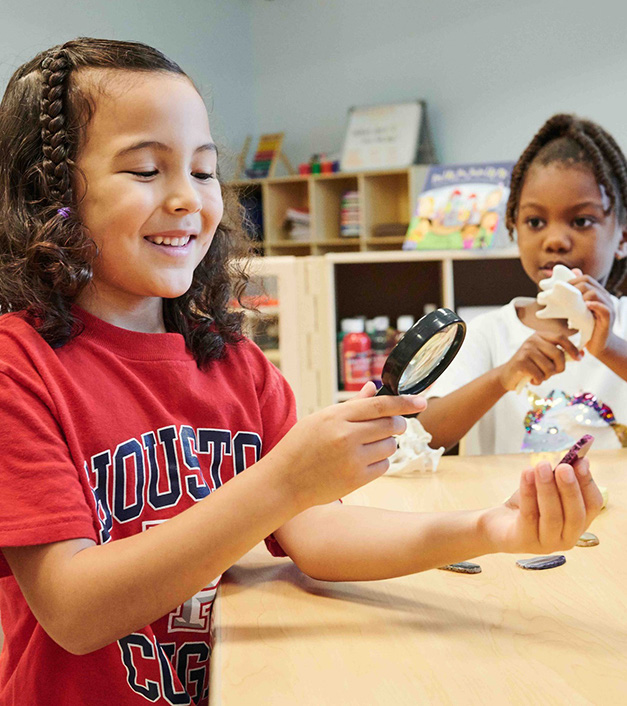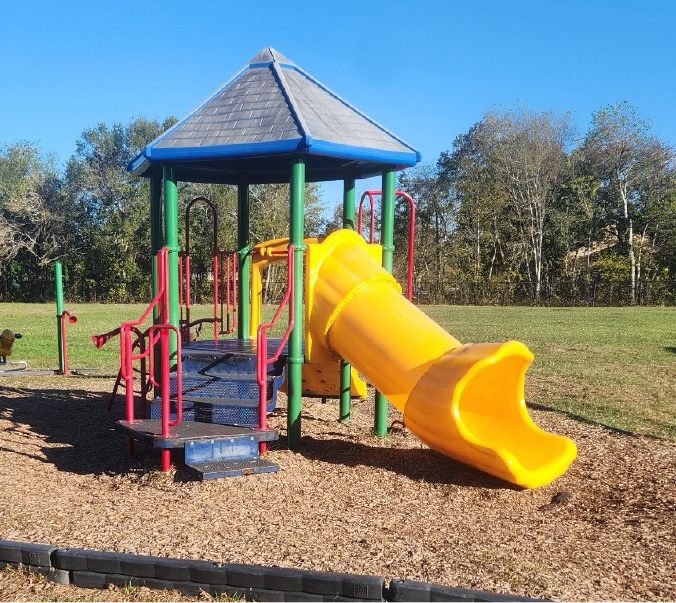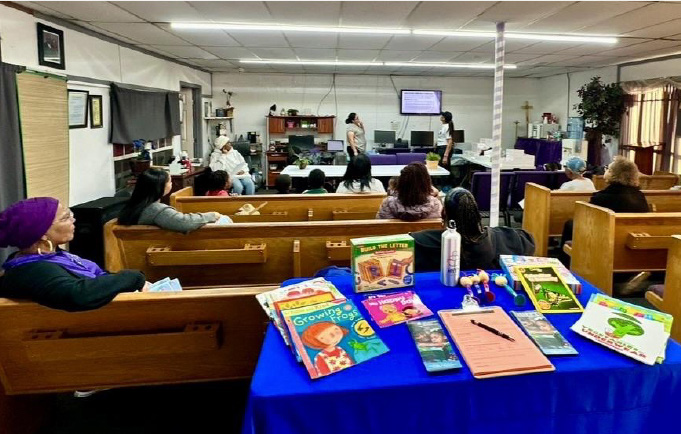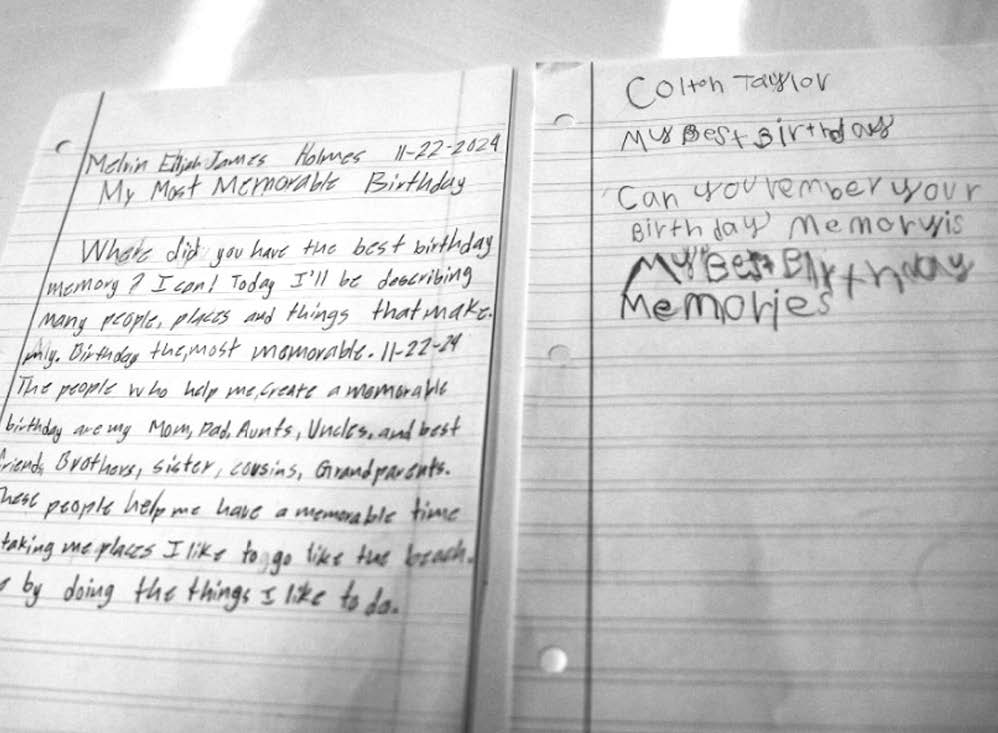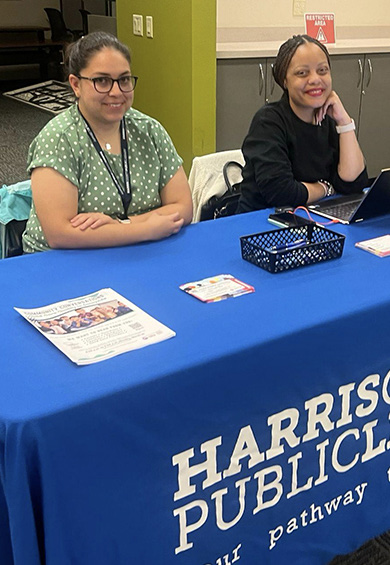Elevating Early Learning and Child Care Quality with Harris County PUblic Library (Precinct 1)
Sunnyside and South Park
HARRIS COUNTY EARLY LEARNING QUALITY NETWORK (ELQN)
COMMUNITY PROFILE
Stay connected! Sign up for ELQN updates.
ABOUT HARRIS COUNTY ELQN
Harris County’s Early Learning Quality Network (ELQN) is a community-centered initiative dedicated to strengthening early learning and child care across the county. Supported by the Harris County Department of Economic Equity and Opportunity, this three-year effort relies on community input and local data to guide its work. This profile highlights the initiative’s progress in Sunnyside and South Park (located in Harris County Precinct 1) through December 2024.
Across Harris County’s four precincts, five communities identified as Child Care Deserts with high social vulnerability are participating in ELQN. Local Network Organizations (LNOs), chosen for their strong ties to these areas, lead efforts to engage child care providers, families, and community members in identifying challenges, priorities, and improvement strategies related to early learning and child care. CHILDREN AT RISK, serving as the Network Support Hub (NSH), provides LNOs with technical assistance and oversees funding for community identified quality-enhancing initiatives. By fostering community collaboration and leveraging local strengths, ELQN demonstrates Harris County’s shared commitment to building a brighter future for our youngest learners.
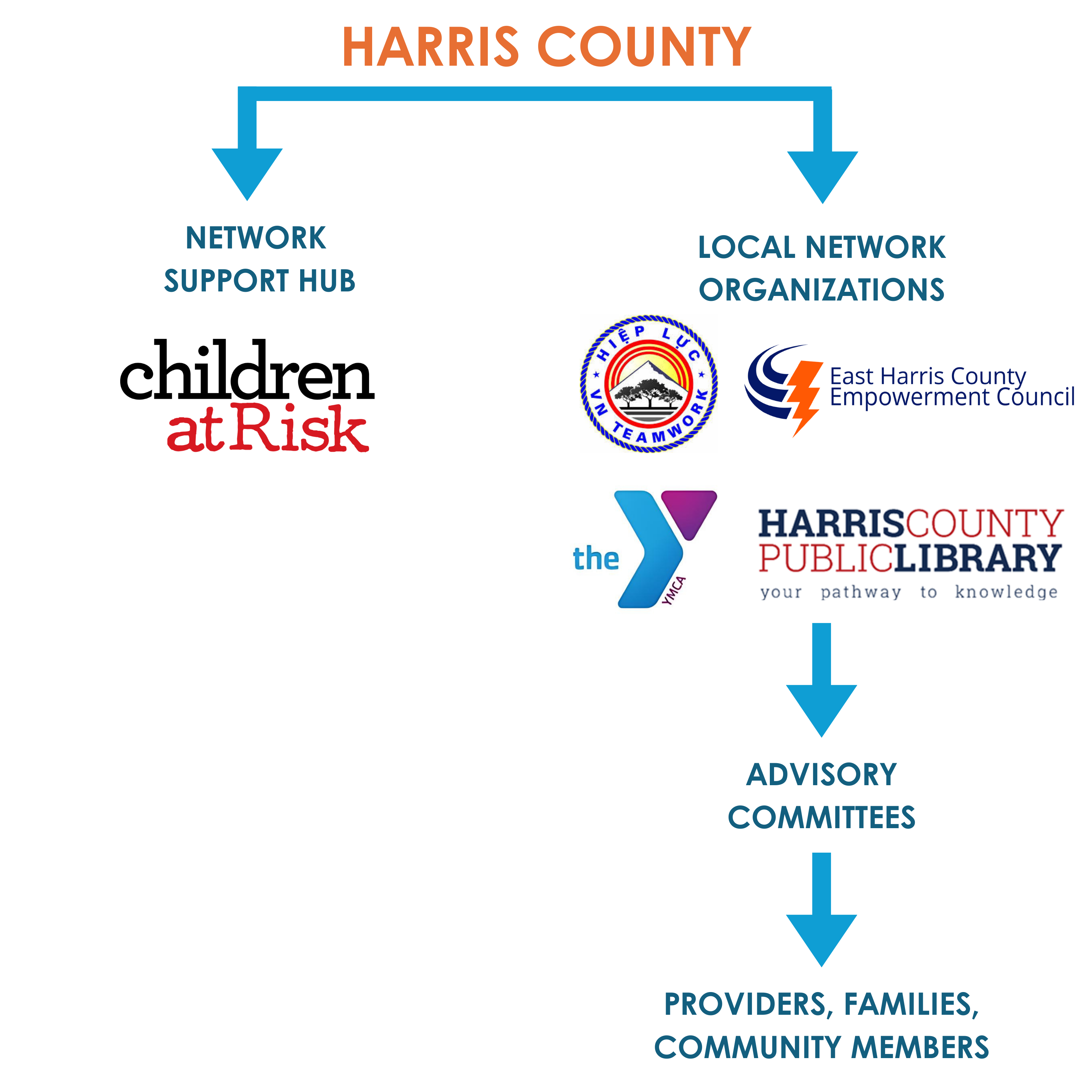
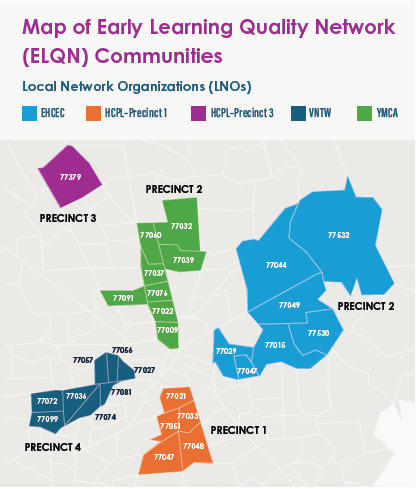
East Harris County Empowerment Council: Precinct 2
Harris County Public Library: Precincts 1 & 3
VN TeamWork, Inc.: Precinct 4
YMCA of Greater Houston: Precinct 2
LNO Spotlight | Harris County Public Library
Harris County Public Library (HCPL) was selected to coordinate the ELQN initiative in two precincts, including Precinct 1, where Sunnyside and South Park are located. HCPL is a network of 27 community-focused branch libraries offering programs and services that foster literacy and lifelong learning.
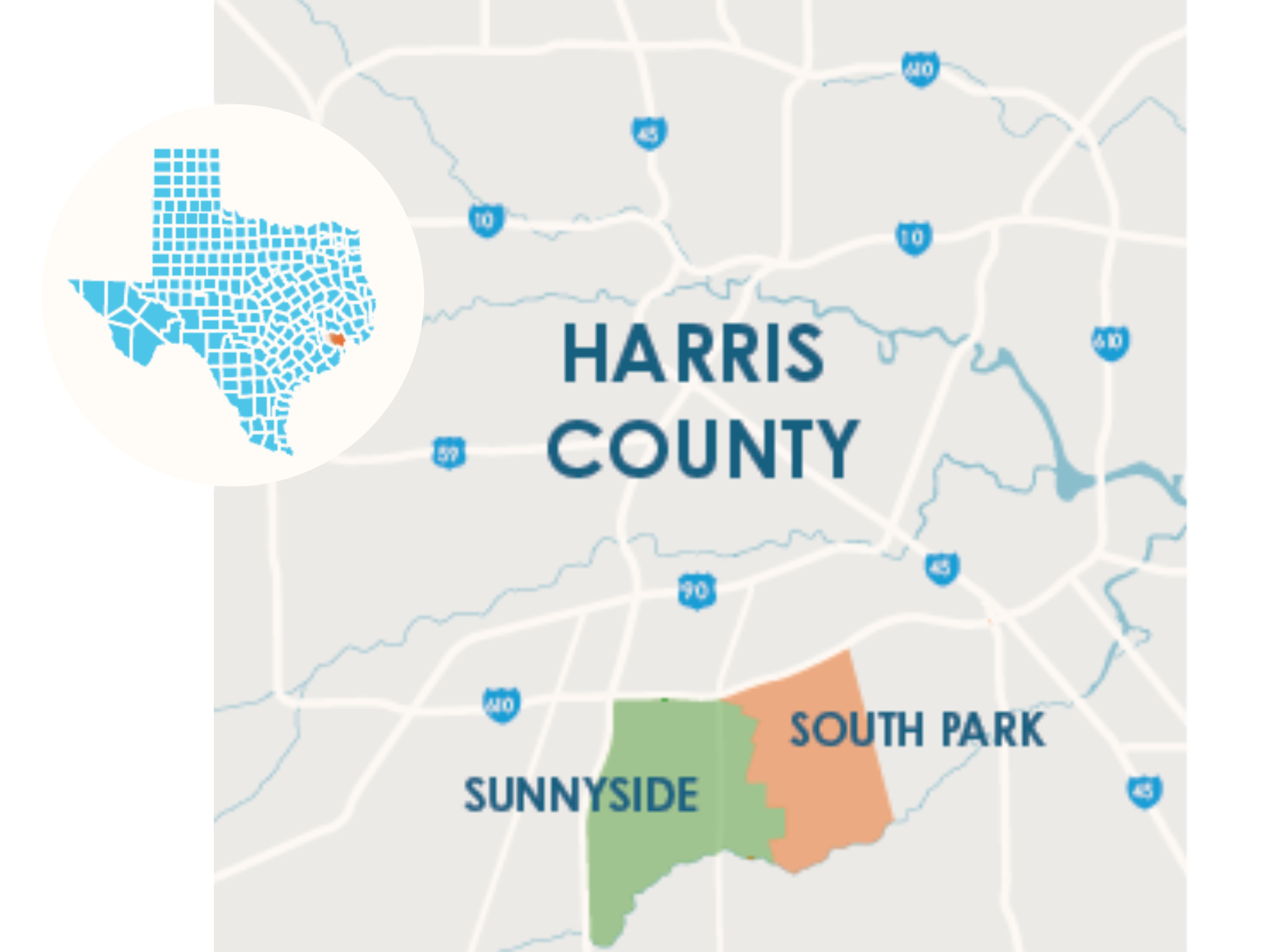
AT A GLANCE
SUNNYSIDE AND SOUTH PARK
Sunnyside and South Park, neighboring communities in southern Harris County, are rich with history and resilience, each contributing to the cultural and social fabric of the area.
Despite facing challenges like economic disparities and limited access to high-quality resources, Sunnyside and South Park benefit from community assets such as Sunnyside Park, local cultural initiatives, and grassroots efforts to improve infrastructure, safety, and education. Together, these neighborhoods stand as enduring symbols of strength, pride, and collective action.
Number of Providers
Estimated Number of Seats
Estimated Children in Need
SUNNYSIDE
Sunnyside, established in 1912 as one of Houston’s first African American neighborhoods, earned a reputation in the 1970s and ’80s as “Black Wall Street” or “Baby River Oaks” due to its thriving concentration of Black-owned businesses.
Total Population
%
Population Under Age Five
Median Household Income
Race & Ethnicity
- White 2%
- Black 75%
- Hispanic or Latino 20%
- AAPI 1%
- 2 or More Races 2%
SOUTH PARK
South Park, developed in the mid- 20th century, became a hub for middle-class Black families seeking stability and homeownership during segregation. Both neighborhoods remain predominantly Black and share a strong family-centric ethos, with longstanding churches, schools, and civic organizations serving as pillars of connection.
Total Population
%
Population Under Age Five
Median Household Income
Race & Ethnicity
- 0.9%
- Black 67%
- Hispanic or Latino 30.1%
- AAPI .1%
- 2 or More Races .4%
FOSTERING COMMUNITY ENGAGEMENT THROUGH ELQN
To prioritize community voices, LNOs provided residents with many meaningful opportunities to share their ideas on how to improve early learning and child care opportunities within their neighborhoods. In spring and summer 2024, Harris County Public Library (HCPL) organized outreach events, listening sessions, and town halls to gather input from child care providers, families, and other community members. During this period, residents were also encouraged to apply to the ELQN Advisory Committee, which was responsible for identifying key needs and envisioning what high-quality care could look like in their communities.
The Sunnyside and South Park ELQN Advisory Committee stands out for its unique composition, with all members being longtime Sunnyside and South Park residents. This group, which includes two parents, two child care providers, and three community representatives, played an essential role in considering community input, analyzing relevant data (including community surveys), and generating a plan to address local needs while staying aligned with community priorities.
ELQN COMMUNITY CENTERED PLANNING PROCESS
HCPL’s ELQN Advisory Committee identified key early learning and child care challenges in Sunnyside and South Park through this process. Providers reported financial constraints, infrastructure needs, and limited preparation to support neurodivergent children. Parents prioritized safety and quality but were often dissatisfied with costs. Community members emphasized affordability, staff training, and collaboration between schools and providers as critical to improving access and quality. Additionally, both providers and families highlighted the need for improved access to technology, with child care providers expressing a desire for tools to enhance operations and instructional quality, and households noting the importance of digital resources for early learning. Despite these hurdles, Sunnyside and South Park benefit from a strong sense of community, vibrant cultural networks, and a shared commitment to education and family wellbeing. These strengths provide a solid foundation for advancing child care quality, accessibility, and equity in the community.
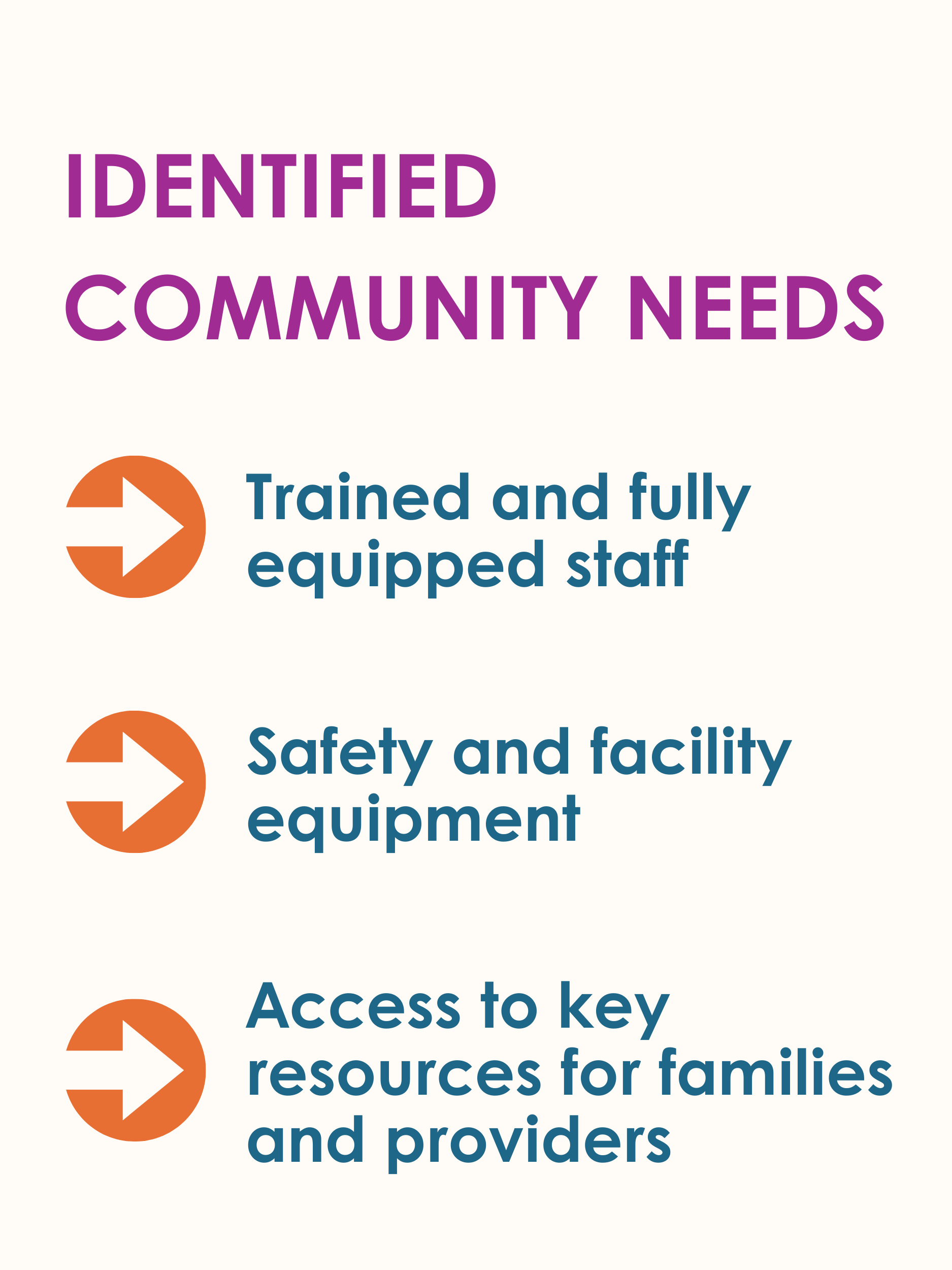

HCPL STRENGTHENING TIES WITH THE COMMUNITY
HCPL’s community outreach efforts involved building strong relationships with local schools, leaders, and organizations to inform and engage the community.
They used eye-catching materials and incentives to increase participation in surveys and meetings, resulting in a high-level of valuable community input. Staff emphasized accessibility by making all materials bilingual and forming one-on-one relationships, particularly with Spanish-speaking community members. As one staff member shared, “People want to talk, but they might not want to talk in front of people…. I’m bilingual. So being able to say, I understand you, come talk to me. ” This approach allowed community members to share their perspectives in ways that felt safe and comfortable, leading to valuable input and stronger connections.
THROUGH THEIR EYES: AMPLIFYING COMMUNITY VOICES WITH PHOTOVOICE
An early childhood teacher and a parent joined the Photovoice project to explore the experiences of families, providers, and community members with early learning and child care in Sunnyside and South Park. They captured photos and shared stories—both their own and those of their neighbors— highlighting community needs, key issues, and opportunities for improvement. Below, they share their photos and narratives about the community.
Bringing Learning to Life: The Power of Hands-On Experiences in Early Childhood Education
In an early childhood classroom, a young girl holds a live bunny, her face glowing with joy. The rabbit transforms a simple lesson about mammals into a dynamic, sensory-rich experience. Real-world connections like these are vital in early education, helping children engage more deeply by using their senses to explore and understand the world. While books and movies are valuable tools, top-quality programs should also provide opportunities for hands-on interactions with the environment.
The presence of the rabbit not only captivated the student but also elevated the classroom into a vibrant learning space, where tactile experiences made the lesson memorable and impactful. Unfortunately, many child care centers and schools lack the funds to provide such enriching resources. To support lifelong learning and foster curiosity in young children, the county should consider funding early childhood programs to enhance curriculums with real-world, hands-on opportunities. These experiences could spark a love for learning, setting the foundation for future success.
– Early Childhood Teacher

“Same Grade, Different Levels”
Two writing assignments, side by side, reveal the stark differences in students’ abilities and opportunities. On the left, a second grader shares a well-written account of their most memorable birthday, displaying writing skills and engagement with the assignment. On the right, another student has simply copied the writing prompt from the chalkboard, struggling with basic handwriting and showing no evidence of understanding or completing the task.
These assignments tell a deeper story about the disparities in education. In Sunnyside, many students come to school already behind due to factors such as limited access to early childhood education, instability at home, or unmet developmental needs.
Teachers face the daunting task of meeting each child where they are, but in overcrowded classrooms with few resources, students like the one on the right risk falling further through the cracks. This image educates us on the urgent need for individualized support and early intervention. Programs like one-on-one tutoring, mentorship, and expanded access to pre-K can help close these gaps before they grow too wide. It is also a call to support teachers, equipping them with tools and staff to address the diverse needs in their classrooms.
Every child deserves the chance to succeed, but success requires investment—in both the classroom and the community.
– Parent
ELQN STRATEGIES TO ENHANCE EARLY LEARNING AND CHILD CARE QUALITY
After identifying and prioritizing the early learning and child care needs of the community, the ELQN Advisory Committee submitted a Child Care Quality Action Plan (CCQAP) to Harris County and CHILDREN AT RISK. This plan included quality improvement strategies that aligned with community needs. After a feasibility review by Harris County, strategies were finalized in late 2024. Identification of needed resources began in late 2024, with implementation scheduled to take place throughout 2025 and 2026.
Child Care Quality Action Plan (CCQAP)
The CCQAP was developed by LNO staff and the ELQN Advisory Committee to address the key needs identified in each community. Drawing on community input and local data, the plan outlines actionable strategies to be implemented in collaboration with the county to meet these needs effectively.
TURNING NEEDS INTO ACTION: ELQN STRATEGY GUIDE
COMMUNITY IDENTIFIED NEED
Trained and Fully Equipped Staff
to engage with diverse student populations, manage challenging classroom behaviors and access inclusive training for both staff and guardians
Training and Professional Development
Training and professional development programs will help parents, caregivers, and child care workers in Harris County gain skills to support young children’s growth and learning. Training on topics like child development and creating inclusive, welcoming environments will be offered free of charge. Participants will also receive resources, coaching, and stipends.
COMMUNITY IDENTIFIED NEED
Safety and Facility Equipment
that addresses safety concerns, improves playgrounds and indoor areas, and supports outdoor learning through
gardens and music spaces
Facility, Safety, and Security
This strategy will help child care centers and homes improve their facilities, safety, and security. Providers will apply to receive upgrades like new furniture and outdoor play equipment, or safety equipment such as cameras and childproofing items. Programs will be provided with customized items tailored to their needs and support for installation.
COMMUNITY IDENTIFIED NEED
Access to Key Resources for Families and Providers
that address barriers surrounding accessibility to social services and technology
Technology- Household
This strategy will provide qualifying households with developmentally appropriate technological learning tools and training related to the use of technology with young children.
COMMUNITY IDENTIFIED NEED
Access to Key Resources for Families and Providers that address barriers surrounding accessibility to social services and technology
Technology- Childcare
This strategy provides child care providers with improved technological resources aimed at enhancing early childhood development and improving the efficiency of business operations.
ABOUT THE ELQN EVALUATION
The ELQN evaluation seeks to understand the planning and design, implementation, and community impact of the initiative over three years. Using diverse data sources—including community storytelling through photographs and narratives, interviews, focus groups, and surveys—the evaluation will provide actionable information on this community-centered initiative, documenting lessons learned along the way. The findings will enhance Harris County’s ability to serve young children and their families.
Engage with ELQN
Join us in our mission to make a lasting impact across Harris County.
Stay Connected
Follow @childrenatrisk on social media and subscribe to our newsletter to stay updated on our progress and learn more about how ELQN is making a difference in early learning across Harris County.
ACKNOWLEDGEMENTS
AUTHORS
Lisa Lopez-Escobar
Kate McKenney, EdD
Sherylls Valladares Khan, PhD
CONTRIBUTORS & REVIEWERS
Harris County Department of Economic Equity & Opportunity
CHILDREN AT RISK
East Harris County Empowerment Council (EHCEC)
EDITING
Cathy Cambron, Editcetera
DESIGN
Danielle Ness, Hey Darlin’
